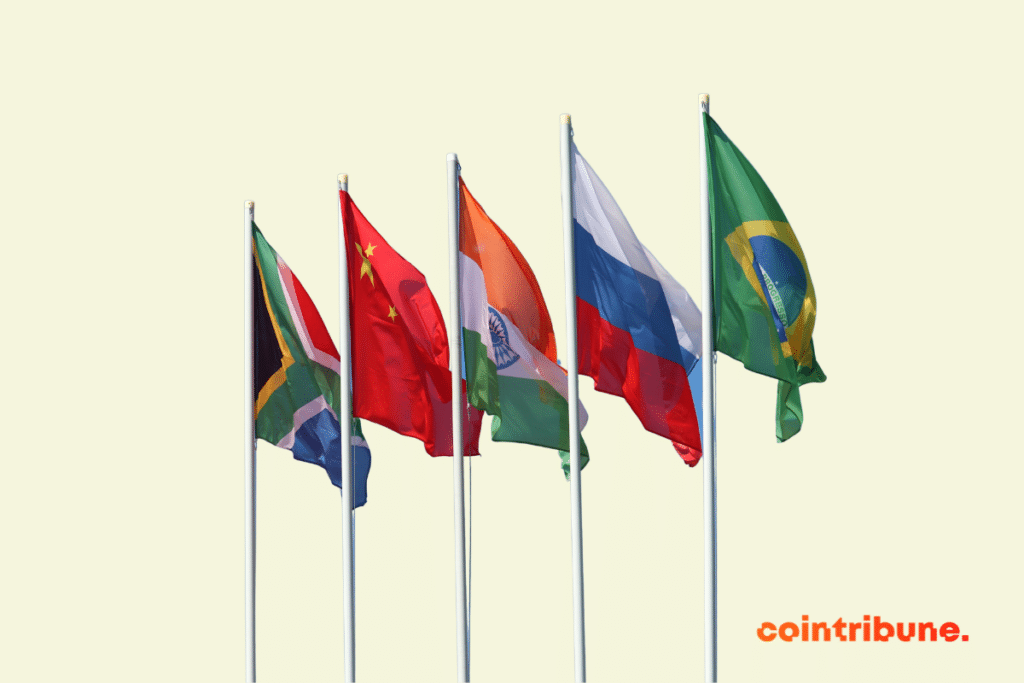BRICS: India Refuses To Pay Chinese Yuan for Oil, Prefers US Dollarhttps://t.co/4iqrQbjjOJ
— John Morgan (@johnmorganFL) October 24, 2023
A
A
BRICS: Currency Issues Provoke Waves of Tension
Tue 31 Oct 2023 ▪
3
min read ▪ by
Getting informed
▪
Payment
Summarize this article with:
The BRICS have officially decided to leave the dollar. In the meantime, the question of the currency’s use in settling international transactions seems to be a point of contention between the member countries. Here’s what it’s all about.

BRICS divided over currency preferences
Tensions have arisen between India, China and Russia, three members of the BRICS. These disagreements are essentially linked to payment methods for volumes of crude oil supplied by Russia, which gives priority to the Chinese currency, the yuan.
This situation, in which the Chinese currency is strengthening its position, is not to India’s liking. In any case, this is the conclusion that can be drawn from a recent event involving the Indian Oil Company (IOC), an Indian public entity responsible for hydrocarbons.
The company suffered delays in the receipt of five oil cargoes due to India’s reluctance to use the Chinese yuan. In this context, the country prioritizes the use of the dollar, despite the common desire of the BRICS to distance themselves from the American currency.
Basically, India suspects China and Russia of using the BRICS to strengthen their local currencies on the foreign exchange market. This could undermine the Indian rupee’s own internationalization efforts.
Is a common currency now almost an emergency?
In this war of state monetary interests, the emergence of a common BRICS currency seems to be the solution to easing tensions between these countries. The entry of this BRICS currency on the financial scene could be more imminent than we think.
Recently, Russian economist Sergey Glazyev revealed significant progress in the development of the future BRICS currency. A project whose ambition is to supplant the US dollar as the world’s leading reserve currency.
In a recent interview, the expert confirmed that the BRICS currency was nearing completion. “Technically, this currency is almost ready, with the necessary software and mathematical tools already in place,” said Sergey Glazyev. All that remains now is to obtain the “political consent” of all member countries to put it into circulation.
It seems that three member states have already expressed their support for this revolutionary initiative. Although no launch date has been specified, sources suggest that the new currency could make its debut at the next summit in Russia. In the meantime, the alliance is likely to focus on refining the infrastructure of its future currency, which may involve cryptos, and gathering the support necessary for its successful launch.
Maximize your Cointribune experience with our "Read to Earn" program! For every article you read, earn points and access exclusive rewards. Sign up now and start earning benefits.
A
A
Diplômé de Sciences Po Toulouse et titulaire d'une certification consultant blockchain délivrée par Alyra, j'ai rejoint l'aventure Cointribune en 2019. Convaincu du potentiel de la blockchain pour transformer de nombreux secteurs de l'économie, j'ai pris l'engagement de sensibiliser et d'informer le grand public sur cet écosystème en constante évolution. Mon objectif est de permettre à chacun de mieux comprendre la blockchain et de saisir les opportunités qu'elle offre. Je m'efforce chaque jour de fournir une analyse objective de l'actualité, de décrypter les tendances du marché, de relayer les dernières innovations technologiques et de mettre en perspective les enjeux économiques et sociétaux de cette révolution en marche.
DISCLAIMER
The views, thoughts, and opinions expressed in this article belong solely to the author, and should not be taken as investment advice. Do your own research before taking any investment decisions.